Best Tips for Exploring the Algarve & Alentejo in Portugal
Artsy Traveler contains affiliate links for products and services I personally use and can happily recommend. As an Amazon Associate, I earn from qualifying purchases. Please read the Disclosure for more information. If you make a purchase through these links, at no additional cost to you, Artsy Traveler earns a small commission. Thank you!
The Algarve gets a lot of attention as a primo travel destination, and it’s worth a visit, but for my money, the Alentejo region is more interesting from an artsy perspective.
I recommend you include both regions in your Portugal itinerary.
Visit the Algarve to explore spectacular scenery and bask on some of Europe’s best beaches.
In the Alentejo, experience the “Tuscany of Portugal” — hill towns, ancient megaliths, and amazing food.

Map of Portugal
Check the map below to get your bearings when planning your trip to the Algarve and Alentejo.
Algarve
The Algarve—holiday central—stretches along the southern coast of Portugal from the Spanish border in the east to the Atlantic Ocean in the west.
If spectacular scenery and sun ‘n fun are your thing, then include two or three days in your itinerary for chillin’ on a beach in the Algarve.
I suggest dropping in to Tavira (#1) in the east and then scooting along the highway to the western Algarve (or the other way around). I’ve spent more time in the western Algarve than the eastern, because the scenery is more gorgeous the farther west you go.
Eastern Algarve
The charming town of Tavira is worth a stop during your exploration of the Algarve. The town straddles the Gilão River and is close to long, sandy beaches and salt pans that attract flamingos, spoonbills, and other wading birds.
The Roman bridge makes for a great photo op, and the cathedral is worth popping into. Although a holiday town, Tavira feels much calmer and laid-back than other parts of the Algarve.
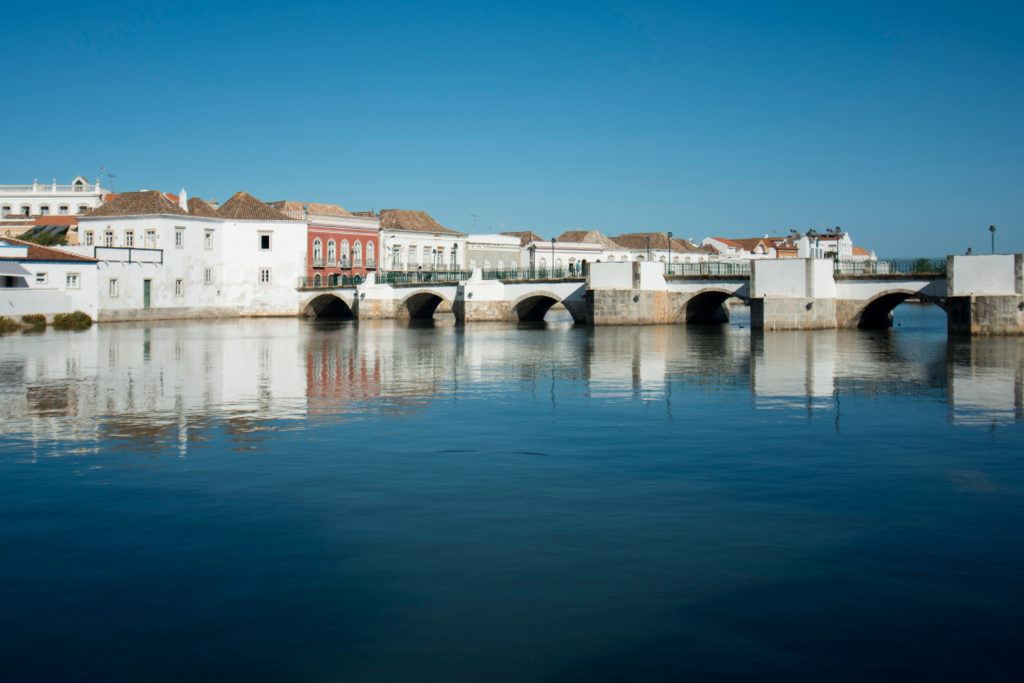
Western Algarve
The western Algarve from the town of Lagos (#2) to the southwest tip of Portugal at Sagres is the least touristy and least crowded part of the Algarve. That said, it doesn’t feel particularly Portuguese. I think we were in the area for two days before we heard anyone speaking a language other than English, Dutch or German.
The big attraction in the Western Algarve is the scenery—rugged red rocks, secret coves, sea caves, and aqua ocean stretching south to Africa. We visited in July, and the weather was perfect, with a breeze always cooling us off.
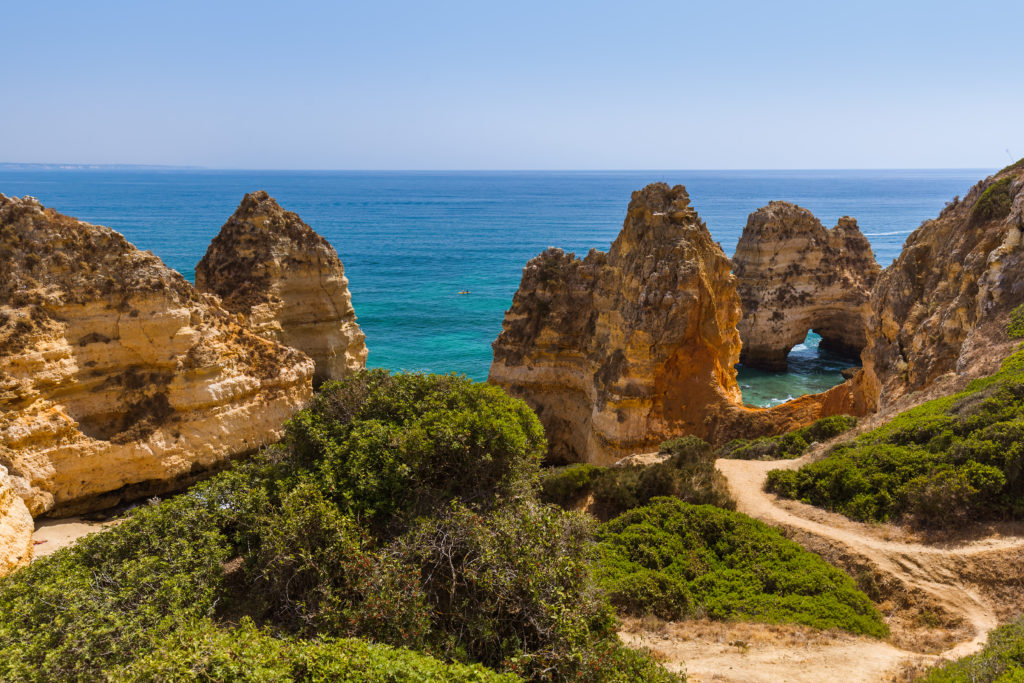
Luz
Find a town west of Lagos to settle into. We chose Luz (#3), a pretty town with a sandy beach, an attractive boardwalk, and a few good restaurants. The town also has a couple of British pubs, a sweet little church, and fabulously rugged cliffs.
You won’t find a whole heck of a lot to do in Luz apart from going for walks and lying on the beach or by the pool. But that’s why you visit, so take a break from sightseeing and lather on the sunscreen.
Enjoying this post? Subscribe to Artsy Traveler to Receive Valuable Travel Tips and Your FREE Guide: 25 Must-Do Artsy Traveler Experiences in Europe for 2025

The Aparthotel Villa Luz, about a ten-minute walk along the cliff top from Luz, is a good choice—a spacious, breezy holiday apartment complex with a bar, a pool, and good breakfasts.
Lagos
Make time on one of your ‘relaxing’ days for a boat trip to see the incredible cliffs that have made the Algarve famous.
Several options are available—from large cruisers to teeny runabouts. We went for the teeny runabout.
Along with a couple from San Diego, we clambered into a small boat steered by a guide who was full of jokes and good humor. Once out of Lagos Harbor, he swung the boat to the right and headed for the cliffs.
The area buzzed with tour boats but didn’t feel crowded. Because we were in a small boat, we were able to enter many of the caves carved into the porous red rocks. The jade green water inside the caves is crystal clear and heavenly.
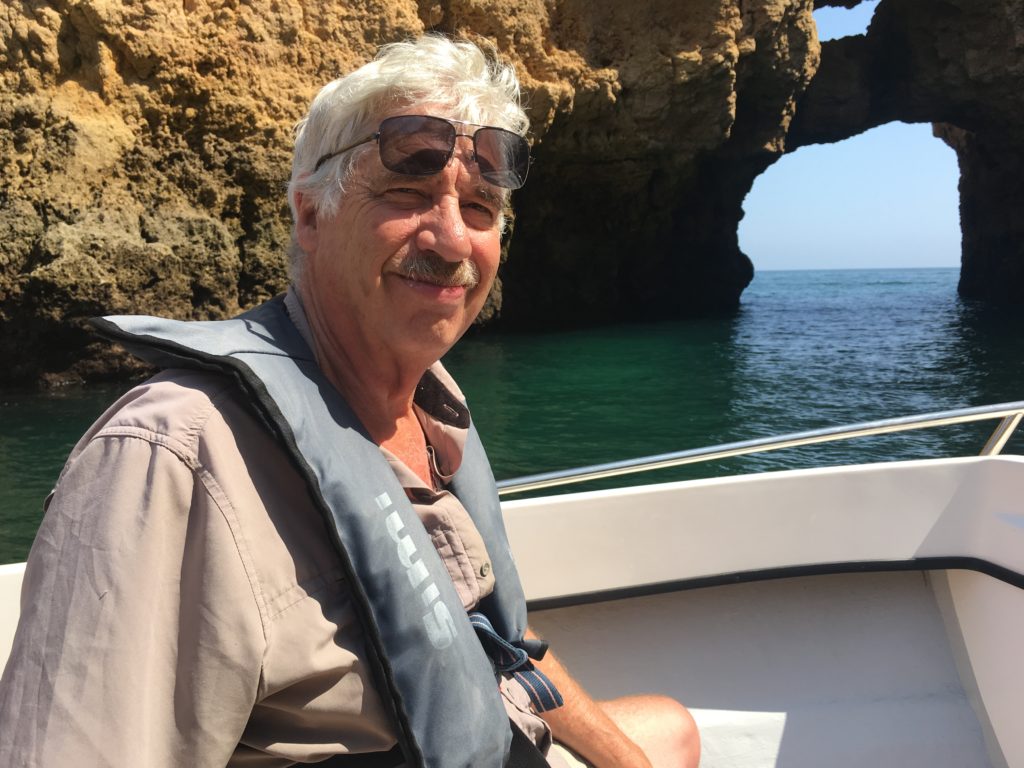
Ask at your hotel about local boat tours, check brochures, and look online for options. I recommend going with a small boat so that you can venture into the caves. We enjoyed every minute of our trip.
Sagres
The southwest tip of Portugal is stunning and, in recent years, has been well-discovered by visitors. If you’re looking for a change of scenery from wherever you’ve chosen to home-base in the western Algarve, consider spending an afternoon on one of Sagres’ windswept beaches.
This area of the western Algarve is popular with surfers. In fact, Sagres (#4) is widely known as a surfing town. I enjoyed watching the surfers kitted out in black wetsuits paddling out to the rolling swells then jumping up and riding back in before wiping out.
Dip your toes into the crashing waves and you’ll realize why the surfer dudes wear wetsuits. The water’s freezing!
You won’t find much in the way of artsy attractions in Sagres. Go for the beaches, the scenery, and the surfing (or at least to watch the surfing).
Here’s a 360-degree view of the scene on a beach at Sagres.
The dramatic Sagres Fortress (Fortaleza de Sagres) is worth a quick look. Stroll the 1.5 kilometer cliffside walk inside the fortress, then check out the lighthouse and Henry the Navigator’s large wind compass (rosados ventos).
Tours of the Algarve
Here are some tours of the Algarve with GetYourGuide.
Tickets for Algarve Attractions
Purchase tickets for Algarve attractions with Tiquets.com
Alentejo
Visit the Alentejo (#5) to enjoy the “Tuscany of Portugal”. Like its Italian cousin, the Alentejo is famous for great food, beautiful countryside, medieval hill towns, olive oil, and wine.
The Alentejo hill towns are whitewashed and dazzling under the hot, blue sky, and the Alentejo has something that Tuscany does not—hectares and hectares of cork forests.
Cork has to be one of nature’s most amazing substances. We went crazy for cork on our first visit to the region and bought several items made from it.
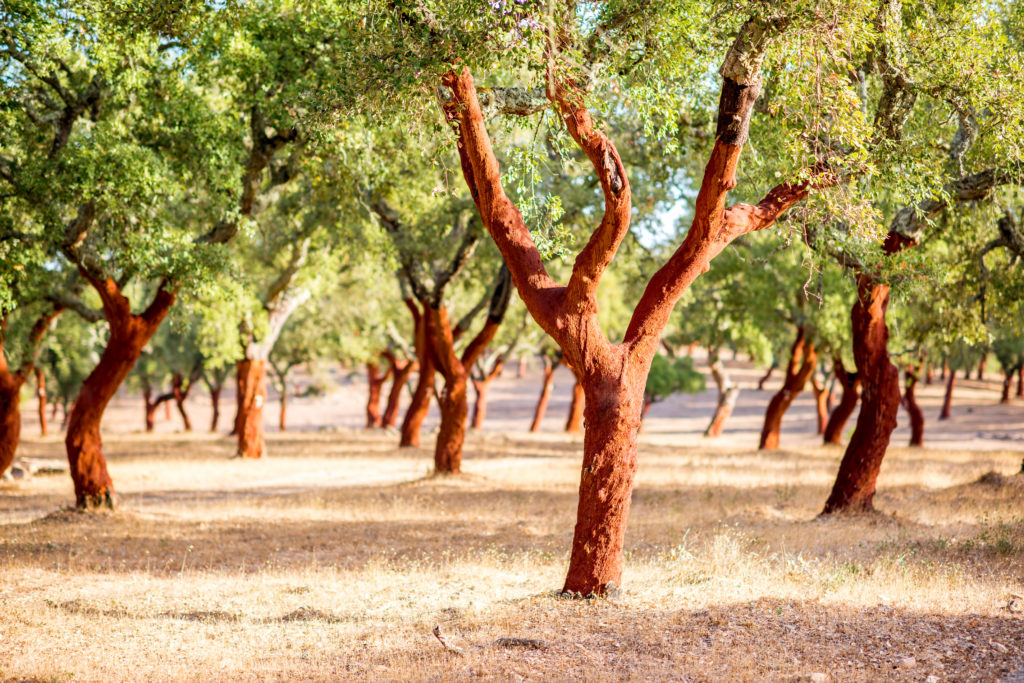
TIP: Buy cork items in places such as Évora rather than waiting to do your shopping in Lisbon. Prices are lower, and the selection is much greater. Good options are handbags and purses, glasses cases, toiletry bags, and hats made from cork. You can even buy a cork umbrella. Cork items are lightweight and easy to pack, perfect to take home as gifts.
The first time we visited Portugal, we bought a cork item for every person on our holiday gift list.
Évora
Home-base in Évora (#6), the largest town in the region with the most to see. The main square includes the remains of the Roman temple known as Templo de Diana. The temple is well preserved and extraordinarily evocative, particularly when photographed against the brilliant blue sky.
Don’t miss the Cathedral of Évora, the largest cathedral in Portugal. I wasn’t able to visit it nor the Chapel of Bones when we were in Évora, but both look interesting.
The Chapel of Bones is a 16th-century chapel decorated with the bones and skulls of over 5,000 corpses. Sounds cheerful.
If you’ve been to the cathedral or the chapel, please add a comment below and tell me about your experience.
Gastronomic Tourism
The Alentejo is famous for its excellent cuisine. Go on a wine-tasting tour, sample local olive oils, and eat at least one meal featuring the region’s famous black pork.
Évora boasts several excellent restaurants. Consider eating at Fialho Restaurant—one of Évora’s most historic and famous restaurants that put Alentejo cuisine on the map. We enjoyed one of our best meals ever at Fialho.
A few kilometers out of town is the Almendres Cromlech, the largest megalithic complex on the Iberian Peninsula. I describe it in more detail in the Artsy Sightseeing section of the Portugal page.
Spend an afternoon driving around the area to see evidence of a civilization that flourished millenia ago.
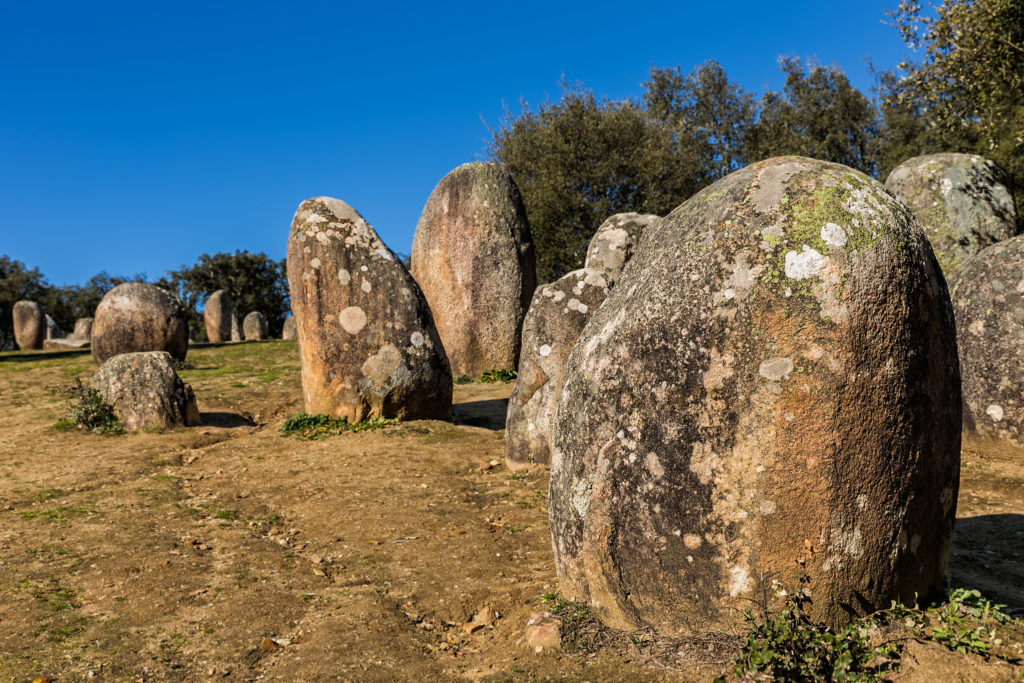
Estremoz
We have a soft spot for this beautiful Alentejo hill town, because Gregg had an exhibition there a few years ago. The town still feels authentic and not at all touristy.

Visit the Museu Municipal Prof. Joaquim Vermelho to see a marvelous collection of local crafts dating from the 17th to the 19th centuries. Of note are the handcrafted clay figurines called the Bonecos de Estremoz.
The figurines are dressed in the regional outfits of the Alentejo and reflect the spirit, humor, work, and traditions of the region. The craftsmanship of these clay figures was recently added to UNESCO’s Representative List of the Intangible Cultural Heritage of Humanity.
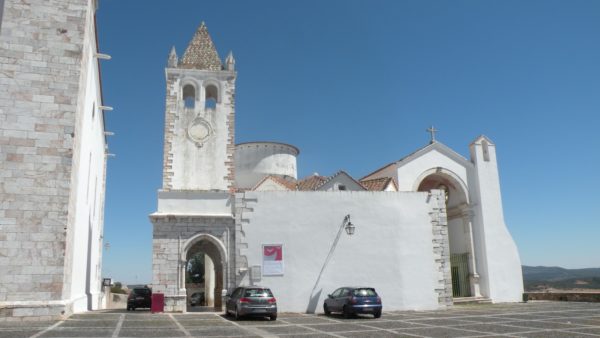
Where to Stay in the Algarve and Alentejo
For accommodation suggestions in Tavira, the western Algarve, Évora, and Estremoz, see Where to Stay in Portugal: My Best Picks.
Have you toured the Algarve and Alentejo? Let us know your experience in the comments.
Here are more posts about Portugal on Artsy Traveler:
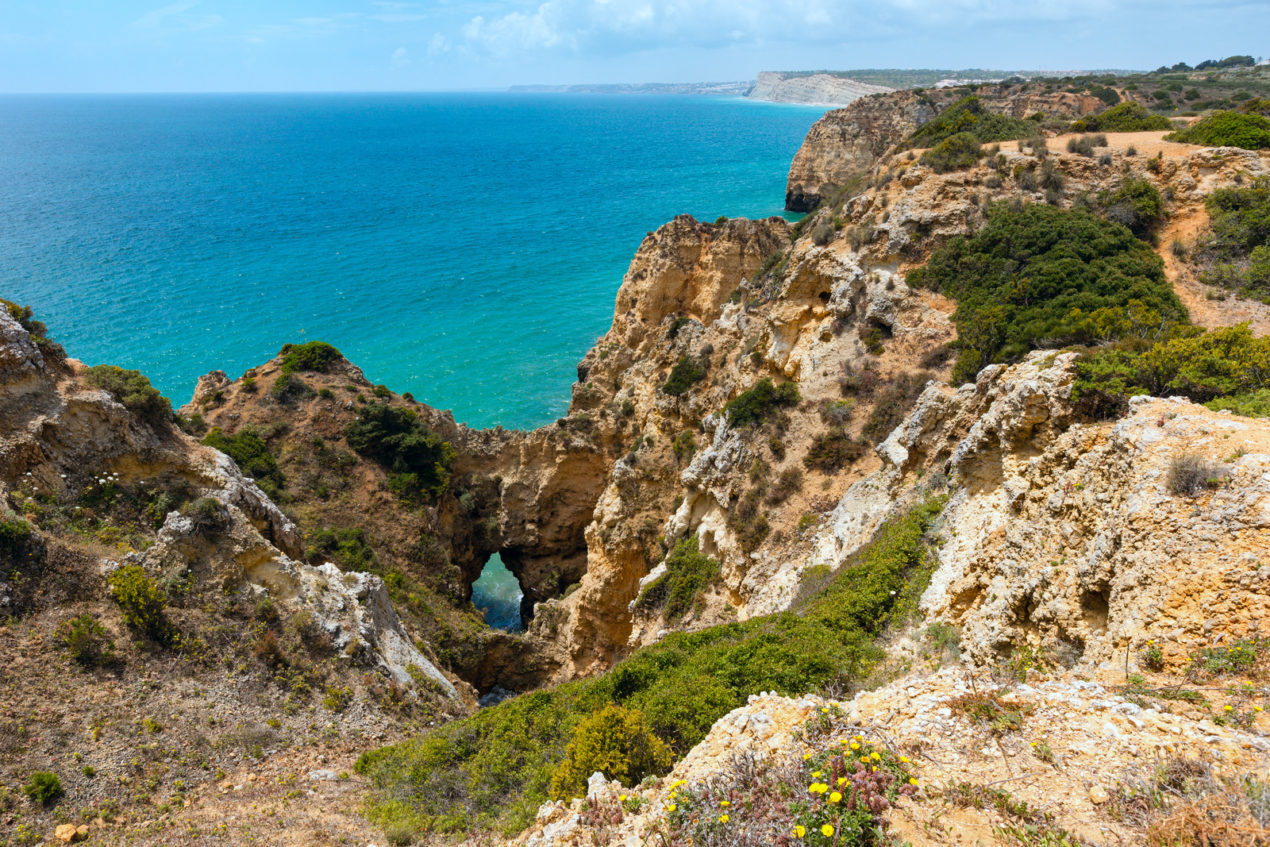
[…] Algarve & Alentejo […]
[…] Exploring the Algarve and Alentejo […]